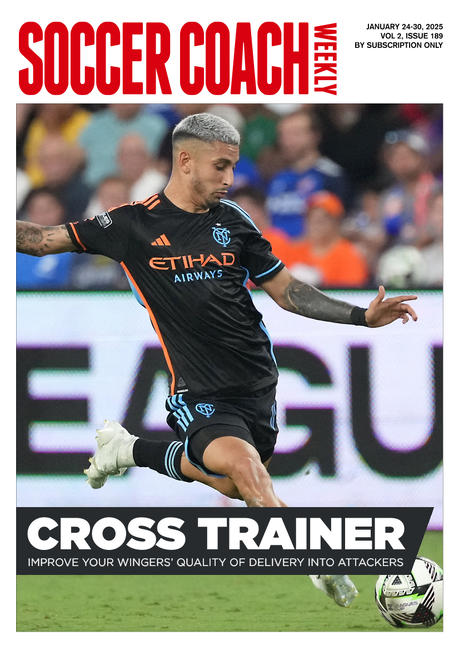Why values are vital
Setting principles for your team can help unite everyone around one cause. But, as STEPH FAIRBAIRN notes, the best outcomes are achieved when player-led.
We read and hear so much about culture, values and behaviours in soccer.
Why? Because if you get them right, they are the foundations on which everything else can be built.
All clubs should have their own values, ideally set out in a code of conduct, or similar, that is agreed with everyone involved on and off the field.
But we can also set values at a team level. And these should be driven by the most important people – the players themselves.
I started this process with a group of U14s. I knew what I wanted – a statement that encapsulates everything the team stands for.
It needed to be something we could hold ourselves, and others, accountable to, and something that defined what success looked like, besides winning.
After thinking about the best way to do it, I settled on a 20-minute session, which also acted as a rest between training activities.
It wasn’t too long a time to feel like a big deal, but it was long enough for the players to remain engaged.
I set out a number of large pieces of paper on the grass, each with a question on them. I gave the players some sticky notes and Sharpies, and asked them to write down anything that came to mind when they read the following questions:
Why do you play for this team? What’s the best bit about it?
With this, I wanted to get a sense of what the space really meant to them – is it about learning, having fun or seeing friends? Knowing more about why they come allowed me to tailor sessions to meet their purpose.
How do you want to behave?
I wanted to understand more about what drives each of the players as individuals. If I knew how they wanted to behave, I could support them in doing so.
How do you want your team-mates to behave?
I wanted to find out more about the interactions between players – the behaviours they wanted to see from each other. This gave us something to hold each other to in times of success, and of difficulty.
How do you want your coaches to behave?
I wanted to find out how I could do better. I was ready to swallow my pride if needed, and encouraged the players to be honest with me.
How do you want your parents/carers to behave?
I wanted to understand how the players would feel best supported by those watching them on the sidelines. This was then fed back to parents and carers.
In sharing these five questions with you, I have used the phrase ‘I wanted’ five times. In actual fact, this is about what the players wanted – what they wanted their space to look like.
We then went into the reviewing stage, pulling all of the ideas together to make a statement we could all agree on, and hold each other to.
When making some amendments to the phrasing of the statement, one girl said to me: "Steph, if we’re going to do this, we have to be honest, or there’s no point."
I was reminded again, as I was many times throughout this value-setting process, that players know what they need far better than we do.
What I needed to do was hold the space to allow them to get it.
Related Files
Newsletter Sign Up
Coaches Testimonials

Gerald Kearney, Downtown Las Vegas Soccer Club

Paul Butler, Florida, USA

Rick Shields, Springboro, USA

Tony Green, Pierrefonds Titans, Quebec, Canada
Subscribe Today
Discover the simple way to become a more effective, more successful soccer coach
In a recent survey 89% of subscribers said Soccer Coach Weekly makes them more confident, 91% said Soccer Coach Weekly makes them a more effective coach and 93% said Soccer Coach Weekly makes them more inspired.
*includes 3 coaching manuals
Get Weekly Inspiration
All the latest techniques and approaches
Soccer Coach Weekly offers proven and easy to use soccer drills, coaching sessions, practice plans, small-sided games, warm-ups, training tips and advice.
We've been at the cutting edge of soccer coaching since we launched in 2007, creating resources for the grassroots youth coach, following best practice from around the world and insights from the professional game.



